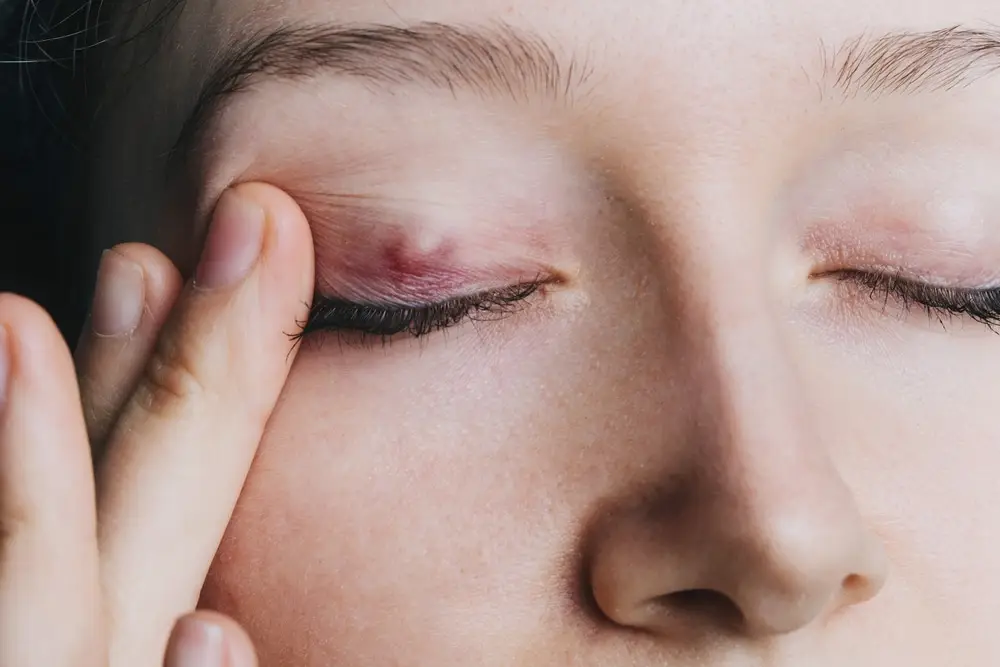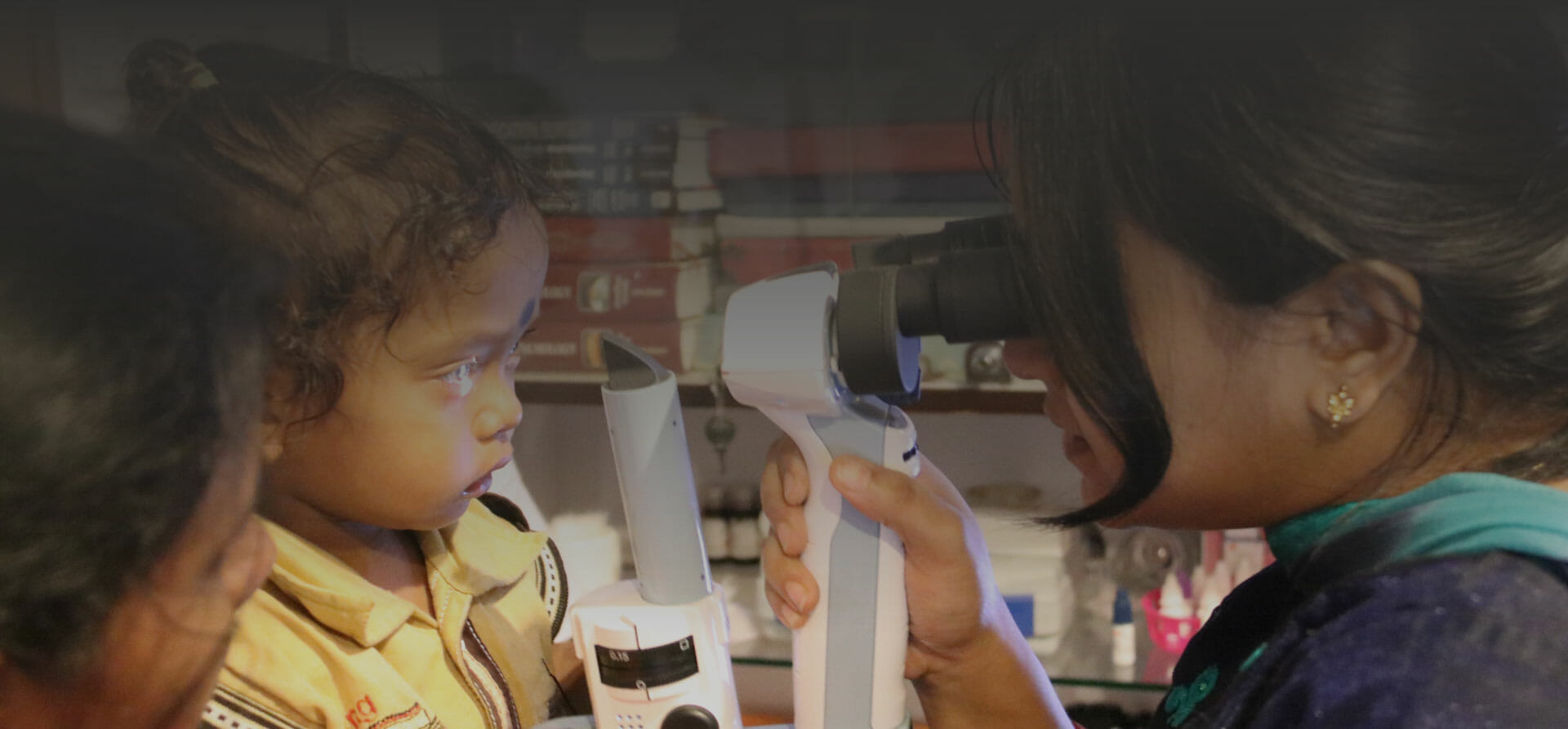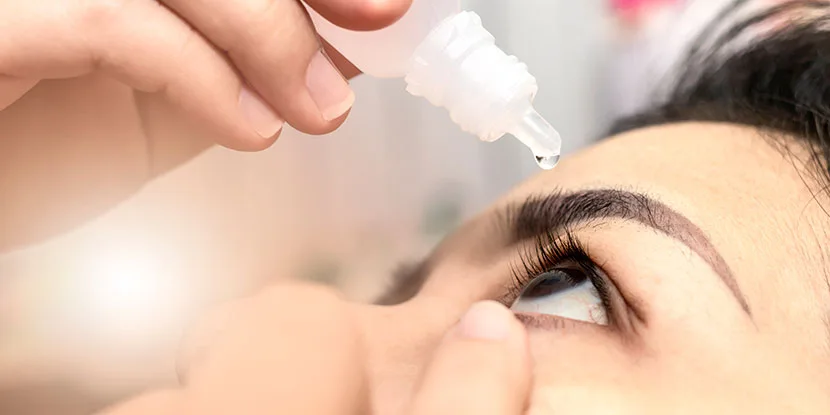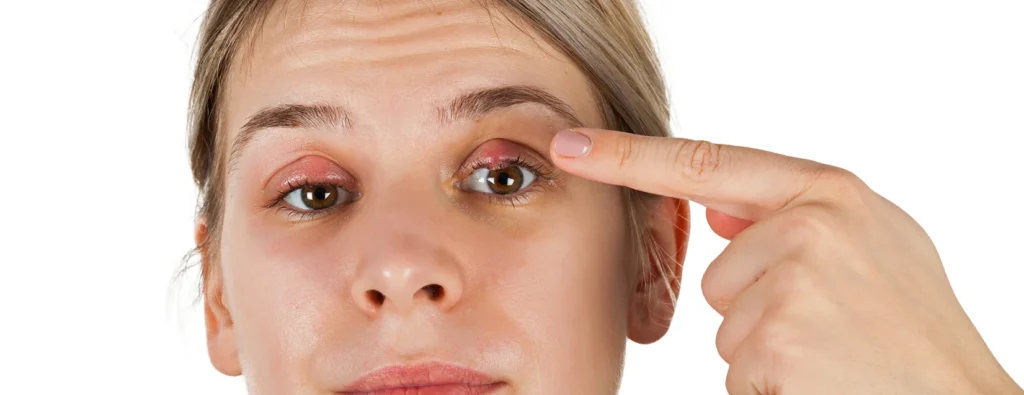Ever noticed a small, stubborn bump on your eyelid that just won’t go away? It might be a chalazion, a common yet often misunderstood eye condition. In this blog, we’ll dive deep into what a chalazion is, uncovering the symptoms to watch for and the reasons they appear. Plus, we’ll share both simple home remedies and medical treatments to help you deal with this pesky eyelid issue.
Contents
What is an Eye Chalazion?

A chalazion is a small, swollen bump that appears on the eyelid due to a blocked oil gland. Unlike a stye, which is typically painful and arises from an infected eyelash follicle, a chalazion is usually painless and develops deeper within the eyelid. It occurs when the Meibomian glands—tiny oil glands lining the margin of the eyelids—become clogged and swollen, sometimes as a result of leftover makeup, dust, or oil, which prevents the gland from draining properly.
Although a chalazion can start out as a tender area on your eyelid, most become firm and non-painful as they grow. They can affect both the upper and lower eyelids and may initially cause swelling and redness. Over time, a chalazion can grow to the size where it presses against the eye, causing blurry vision if not treated.
Symptoms of a Chalazion
- Swelling of the eyelid
- Redness in the affected area
- Formation of a painless bump on the eyelid
- Sensitivity to light
- Increased tearing of the eye
- Blurry vision if the chalazion is large
- Discomfort or irritation when blinking
- Cosmetic disfigurement for larger chalazions
Causes of an Eye Chalazion
A chalazion develops when an oil gland in the eyelid becomes blocked and swollen. Here are the primary factors that contribute to the formation of a chalazion:
- Blocked Meibomian Glands: These glands secrete oils that help lubricate the eye surface. If they become clogged, usually due to thickened oil or inadequate gland drainage, it can lead to chalazion formation.
- Poor Eyelid Hygiene: Infrequent or improper cleaning of the eyelids can allow oils and debris to build up, increasing the risk of blockages.
- High Lipid Concentrations in Gland Secretions: Some individuals naturally produce oilier secretions or may have changes in the consistency of their gland secretions due to diet or health conditions, contributing to gland blockages.
- Previous Styes: Having had styes in the past can predispose individuals to chalazion. A stye that does not completely resolve can turn into a chalazion.
- Chronic Blepharitis: This long-term inflammation of the eyelids, often associated with bacterial infection or skin conditions such as dandruff and rosacea, can lead to recurring chalazion.
- Makeup and Skincare Products: Heavy makeup or certain skincare products, especially if not removed thoroughly, can contribute to the blockage of Meibomian glands.
Understanding these causes can help in effectively preventing and managing chalazion, ensuring proper eyelid health and comfort.

Your Help Can Make a Difference!
Cataract Is The Biggest Reason For Blindness!
With Every Donation, You’re Gifting a Cataract Surgery To Someone in Need!
Is it OK if a Chalazion is Left Untreated?
In many cases, a chalazion can resolve on its own without needing specific medical treatment, especially if it is small and not causing significant discomfort or vision problems. However, leaving a chalazion untreated does carry some risks.
While it’s often safe to watch and wait with simple home treatments like warm compresses, if a chalazion does not improve within a few weeks, or if it starts to affect your vision, causes significant pain, or shows signs of infection such as increased redness, pain, or swelling, it’s important to seek medical advice.
Diagnosing a Chalazion
Diagnosing a chalazion typically involves a straightforward process conducted by healthcare professionals. Here’s how they assess and confirm a chalazion diagnosis:
- Visual Inspection: The doctor will first examine the appearance of the eyelid, noting the size, shape, and location of any lumps.
- Palpation: The doctor may gently palpate (touch) the eyelid to assess the firmness of the bump and to determine if there is any tenderness, which is more characteristic of a stye than a chalazion.
- Medical History: Questions about overall health and any known conditions that might contribute to eyelid issues, such as diabetes or skin conditions like rosacea, are crucial as they can influence eyelid health.
- Slit Lamp Examination: A more detailed examination using a slit lamp microscope allows the doctor to view the structures of the eyelid and eye at high magnification and illumination. This helps in assessing the chalazion’s effect on the eye and confirming the absence of complications.
By following these diagnostic steps, healthcare professionals can accurately identify a chalazion and differentiate it from other eyelid conditions, ensuring that the appropriate treatment plan is prescribed.
How Do You Treat an Eye Chalazion?

Treating a chalazion effectively can often begin at home with simple, non-invasive methods, and may also involve medical interventions if necessary. Here’s how to approach treatment:
Home Treatments:
- Warm Compresses: Apply a clean, warm compress to the eyelid for 10-15 minutes several times a day. The warmth helps to soften the hardened oil that is blocking the gland, promoting drainage and healing. Ensure the compress is warm but not hot enough to burn the skin.
- Gentle Massage: After applying a warm compress, you can gently massage the area of the chalazion with clean fingers. This can further encourage the blocked gland to open and drain. Be gentle to avoid causing any damage to the eye.
- Maintain Eyelid Hygiene: Keeping the eyelid clean is crucial. Regularly cleaning the eyelid with mild soap and water or suitable eyelid scrubs can help prevent further blockages and assist in the healing process.
Medical Interventions:
If the chalazion does not improve with home treatments, or if it becomes particularly large or painful, medical intervention may be necessary:
- Topical Antibiotics: If there is any sign of infection or if the chalazion is not resolving, doctors may prescribe antibiotic ointments to apply directly to the eyelid.
- Steroid Injections: For persistent chalazions, a corticosteroid injection into the lesion can help reduce swelling and promote healing.
- Surgical Removal: In cases where the chalazion continues to grow or causes significant discomfort or visual impairment, surgical removal may be recommended. This minor procedure is typically performed under local anesthesia in a doctor’s office.
Each treatment approach aims to relieve symptoms, promote healing, and prevent recurrence. It’s important to consult with a healthcare provider to choose the appropriate treatment based on the size of the chalazion and individual health considerations.
Preventing a Chalazion
While chalazia can sometimes develop unexpectedly, there are several effective strategies you can adopt to minimize your risk of experiencing this condition. Here are some practical tips to help prevent future chalazia:
- Maintain Good Eyelid Hygiene: Which comes with regular cleaning of your eyelids and regularly applying warm compresses
- Daily Removal: Make sure to remove all eye makeup thoroughly before going to bed. Makeup residue can clog the oil glands around your eyelids.
- Consider Dietary Changes:
- Increasing Omega-3 Fatty Acids such as fish, flaxseeds, and walnuts, can help improve the oil quality produced by the glands in your eyelids.
- Stay Hydrated: Drinking plenty of water helps maintain overall hydration and supports the health of your skin and eyes.
- Avoid Touching or Rubbing Eyes: Keep your hands clean and avoid touching or rubbing your eyes.
- Use Quality Eye Care Products: Opt for hypoallergenic makeup and skincare products that are less likely to irritate your eyes and skin.
- Manage Underlying Health Conditions: If you have skin conditions like rosacea or dandruff, managing these can help reduce the risk of developing chalazia, as they can contribute to blockages in the eyelid glands.
- Warm Compresses: to your eyelids can help keep the oil glands clear and functioning properly.
- Proper Techniques: Use a gentle makeup remover designed for the eyes. Avoid scrubbing or pulling at the delicate skin around the eyes.
- Replace Regularly: Regularly replace makeup products, especially mascara and eyeliner, to reduce the risk of bacterial contamination.
By incorporating these preventive measures into your daily routine, you can significantly reduce the likelihood of developing chalazia and maintain healthy and clear eyelids.
Conclusion
If you’re dealing with a chalazion or any other eye-related issues, remember that timely and effective treatment is crucial. At EyeMantra, we’re dedicated to providing you with the best care to address all your eye health needs. Don’t let your symptoms linger and potentially worsen. Take the first step towards clearer, healthier vision by booking your free appointment with us today. As the Best Eye Hospital in India, we’re here to support you with expert care and advanced treatments. Call us now at +91 9711116605 and ensure your eyes receive the attention they deserve.
FAQs
Can a Chalazion Damage Vision?
A chalazion itself typically does not damage vision permanently. However, if a chalazion becomes large enough, it can press on the cornea, temporarily distorting vision by inducing astigmatism. Once the chalazion is treated and reduces in size, normal vision usually returns.
Do Chalazions Spread?
Chalazions do not spread from one eye to another nor from person to person. However, individuals who are prone to chalazions may experience multiple chalazions either simultaneously or at different times, which can give the appearance of spreading.
Can Screen Time Affect a Chalazion?
Direct screen time does not cause chalazions, but extensive use of screens can lead to eye strain and dryness, which may exacerbate symptoms like eyelid irritation if you already have a chalazion. It’s important to take regular breaks and practice good screen hygiene to minimize discomfort.
How Long Do Chalazions Last?
The duration of a chalazion can vary. Many resolve on their own within a few weeks to a month. However, some chalazions may persist for several months if not treated. If a chalazion does not improve within a month or continues to grow, it’s advisable to seek medical advice for potential treatment options.
